G’day intrepid bush foodies!
I realise it has been quite some time since my last expedition, but once again Mr. and Mrs. Bush Food Forager have been on the move. This year was the first year we decided to take some effort to visit one of our local State pine forests, you know, the kind artificially planted and typically used for the harvesting of timber. And our mission? A delectable harvest of pine mushrooms!
Now mushrooms are one of those bush tucker items surrounded with a perpetual mystique of inherent danger. Yes, it is true, some mushrooms kill more people every year than sharks, snakes and spiders combined (I’m looking at you, Amanita phalloides!). And unlike plants, potentially deadly mushrooms will give you absolutely no warning whatsoever that their ingestion will cause misery, suffering and potentially fatal outcomes. Thus, a great measure of hesitation is required when daring to delve into this risky past-time. Nevertheless, there are a great many edible and delectable mushrooms to be found, and at number, in the commercial pine forests of Australia and elsewhere.
For the record, I am a novice and inexperienced mushroom forager. Typically, I leave 99.9% of the mushrooms I encounter in my expeditions alone and only take photographs away with me. And while there are some interesting native mushrooms, namely, native truffles (Choiromyces aboriginum and Elderia arenivaga) and the potentially monstrous (up to 20 kg!!!) blackfellow’s bread (Laccocephalum mylittae), this expedition will concentrate on the more accessible and delectable non-native, introduced mushrooms of the commercial pine forests.
One last note: if you have friends from Italian, Polish, Ukrainian, Russian or other eastern European countries, ask to tag along when they go out mushroom foraging every Aussie autumn. Annual mushrooming is ingrained in many European cultures and they are very good at it, even away from their home climes! Even though I went alone (with Mrs. Bush Food Forager, who is Korean), I utilised my accumulated foraging knowledge to identify the edible mushrooms I wanted, and then met two Ukrainian mushroom foragers in the same area of that state pine forest who kindly double-checked my identifications!
Without further ado, let’s see what I found!
Saffron Milk Caps (Lactarius deliciosus) - EDIBLE

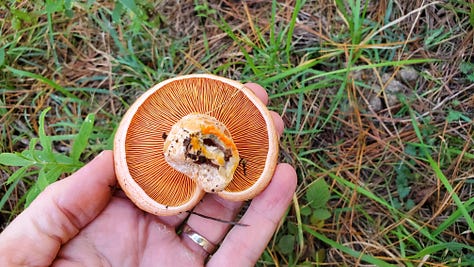

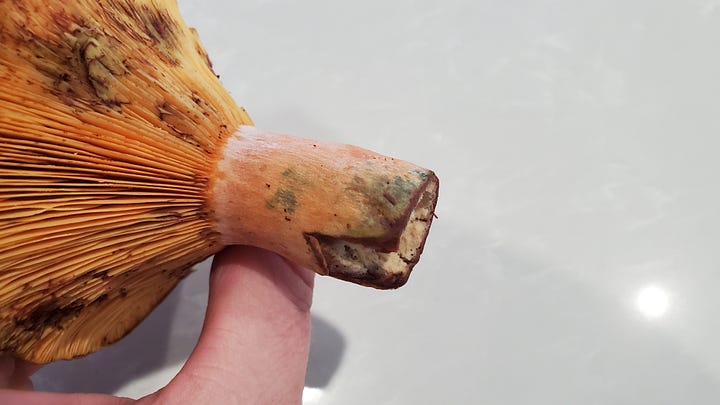

Saffron milk caps are a fairly ‘crunchy’ mushroom; they have excellent texture which lends well to being cooked simply. Sautee in butter or oil with a dash of salt, garlic and chili, with or without the addition of pasta of your choice, and you have a complete meal in 10 minutes! However, I am a stickler for creamy mushroom soup so that is where mine ended up. I will add only one minor caution with these mushrooms. Consuming saffron milk caps will cause your urine to turn dark orange-red for a day or two. So now when it happens you do not need to worry about having suffered catastrophic liver or kidney damage. For more detailed information on saffron milk caps, please see Diego Bonetto’s entry [HERE].
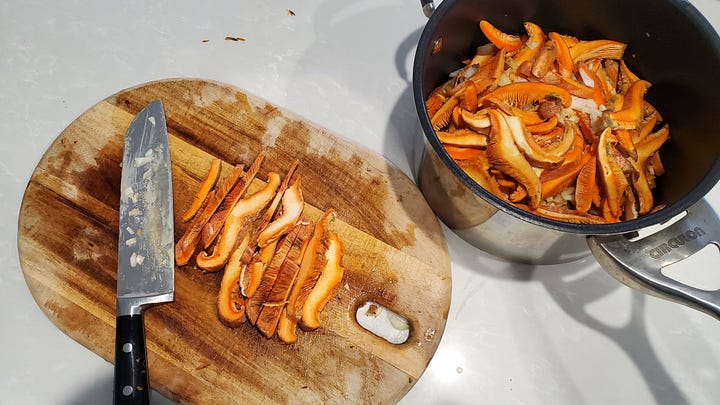
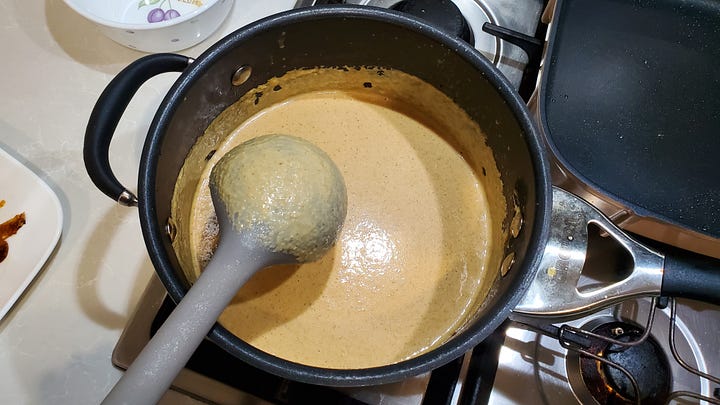
“Slipperies” (Boletus species) - EDIBLE


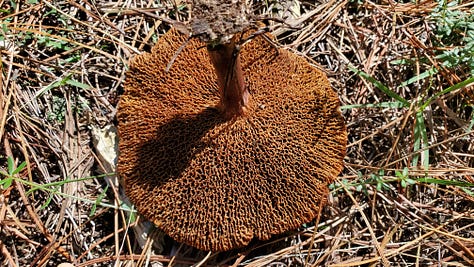
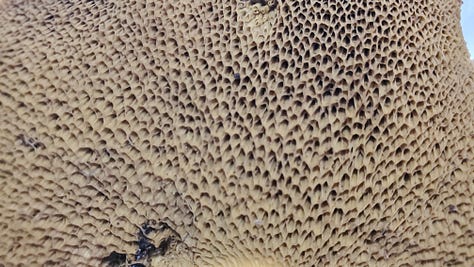


Reminiscing on my discovery of a patch of Boletus, I now recall seeing a dark brown, slimy-capped Slippery Jack nearby to where I found these B. bovinus, but I did not venture to pick them (I should have). Last year a Turkish friend of mine went foraging for these and collected a large number, which he pickled into 1.5 L jars. I only found about 5 or 6 of the Slippery Cows (B. bovinus), all of which were quite far gone— the pores underneath the cap turn dark brown and fill with irritating spores— so I disposed of them except one to take home as a demonstrator. My Turkish friend informed me last year that consuming Boletus can cause mild diarrhoea, and that the slimy skin on the caps (and sometimes the pores, if the mushrooms are large and old) are typically removed before cooking. Boletus are a spongy mushroom that pickles well, and can be used in any dish with a rich sauce for them to gleefully soak up.
For more detailed information on the three species of edible Boletus most commonly encountered in Australian pine forests, please see Diego Bonetto’s entry [HERE].

That ends my entries of the identified, edible mushrooms I was specifically hunting for in the pine forest. Yes, really! As a novice mushroomer, I will not take any chances with unidentified ‘shrooms, and neither should you! When foraging amongst the pine stands, keep to the saffron milk caps (Lactarius deliciosus) and the slipperies (Boletus species) and you will always leave with a content harvest of 100% edible ‘shrooms.
Now I did find other mushrooms, to which we now turn.
Ghost Mushrooms (Omphalotus nidiformis) - TOXIC


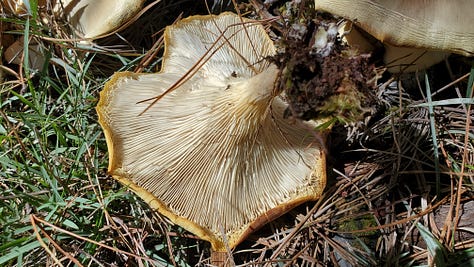
Now I may have misidentified these, but they very much look like our native ghost mushrooms. When I first saw them I thought they could be edible oyster mushrooms, but I refrained myself because I was not 100% (and you must be 100% with mushrooms!). These guys are poisonous so should not be eaten (although they only cause vomiting and nausea lasting 30 mins to 2 hrs). Why do I mention them, then? Well, because I found them, and because the awesome buggers glow in the dark with natural bioluminescence!
No Freaking Idea (???)
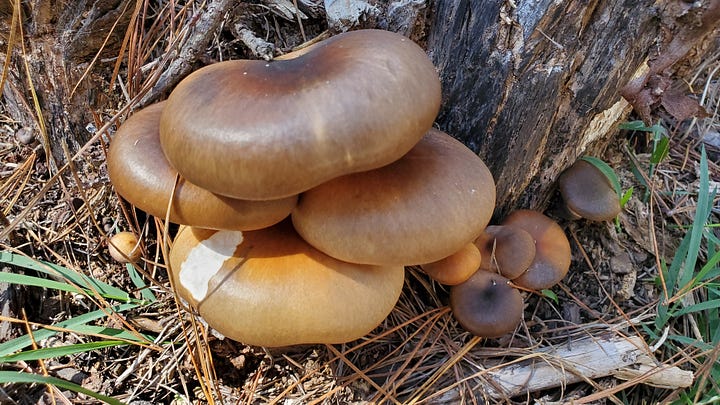
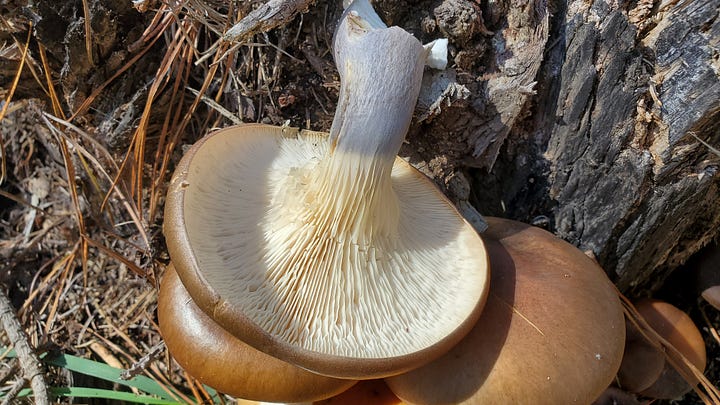
If anyone knows what these are, please tell? They sure looked like some variant of tasty oyster mushrooms, growing on a dead pine stump as they were. But since I did not know for sure what they were, I did not put any into my basket! But they looked so cool I wanted to include them in this article.
SBMs, or Small Brown Mushrooms (Galerina species) - DEADLY, DO NOT EAT!

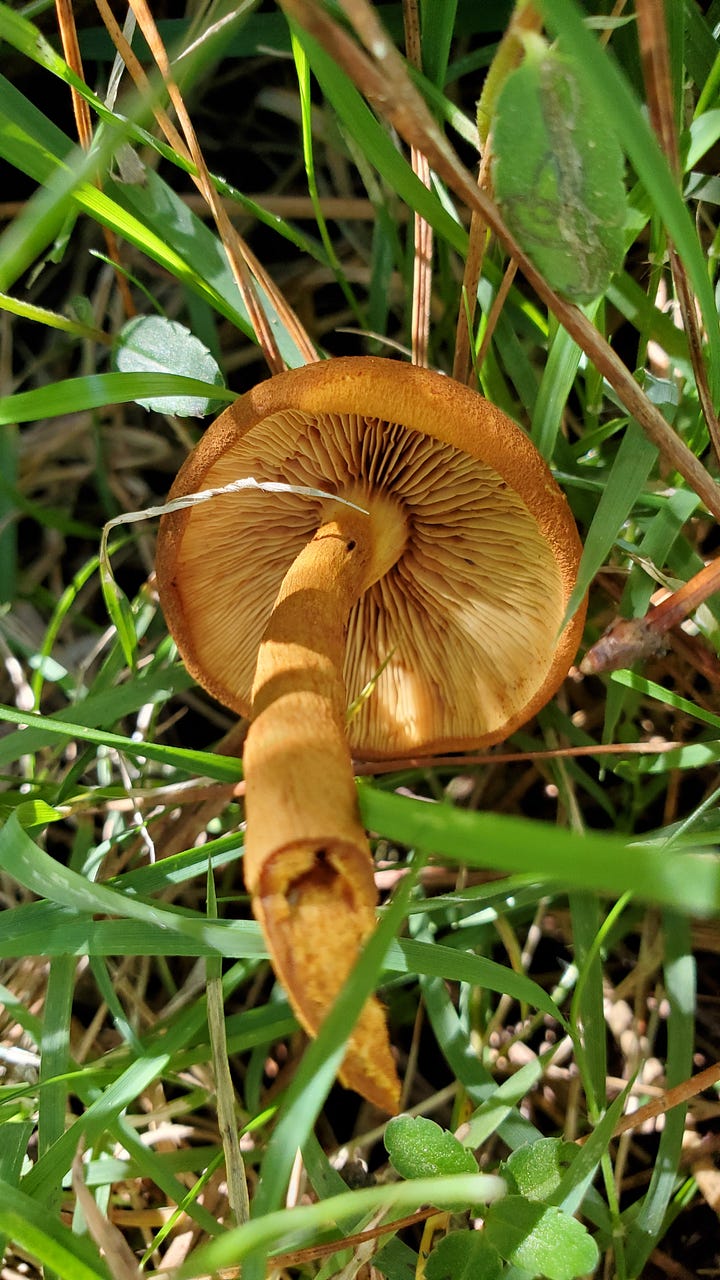
Victorian soil mycologist Dr. Mary Cole advises foragers to avoid small, brown mushrooms in Australia, as many of these come from the Galerina genus which are as deadly as death caps (Amanita phalloides). Typically, Galerina have glossy caps and are completely brown, and usually not bigger than your thumb. They like to grow in moist areas abundant with moss.
Shaggy Ink Caps (Coprinus comatus) - EDIBLE
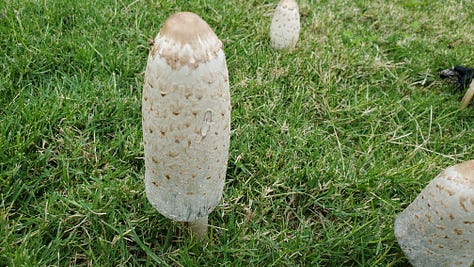
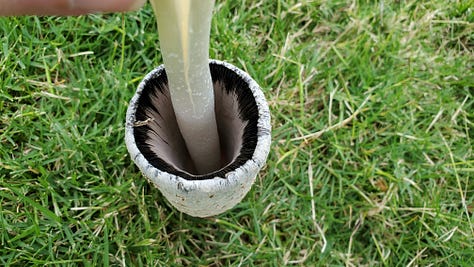

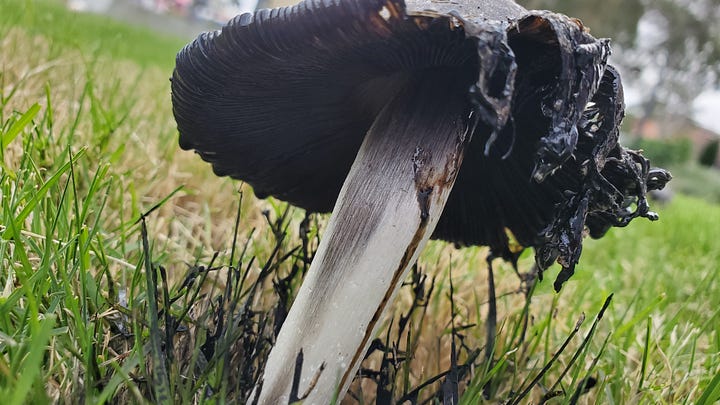

Now I did not photograph these this year, these were from last autumn (2024). But I wanted to include them as this is my first major post on edible mushrooms. Sure, they look totally gross when they get to the ‘ink’ stage of their development, but in the early stage when they’re just poking up through the grass is when they are delectable morsels. They should be cooked the same day as harvest as they will not keep at all.
Last of all, we turn to a mushroom I did not find, but everyone in the whole world ought to know how to identify this deadly denizen of the fungal world.
Death Caps (Amanita phalloides) - FATAL, DO NOT EAT! AT ALL. EVER!!!

There it is, the deadliest mushroom of all, accounting for 90+% of mushroom-related fatalities annually! I did not encounter any of these as they prefer oak forests (and, now that they’re introduced to Australia, eucalyptus forest; in the USA, the mushroom has adapted to Californian pine forests!), but no series on edible mushrooms should be complete without mentioning the death cap. Now note the interesting features of this guy. The cap is yellowish, but can be white, and it will stain yellow if bruised or cut. The gills are WHITE. WHITE. WHITE. This is very important, and why, if you’re picking random mushrooms in the forest, to always take extreme care with any mushroom that has WHITE GILLS underneath the cap. Death caps are regularly confused for the edible, generally white field mushroom (Agaricus species, not featured in this article, but think of a button mushroom from the store, which are Agaricus), which has GREY or dark gills. Death caps have a ring around the stem (like Slippery Jacks do) and they ‘hatch’ out of an underground ‘egg’ (correctly, volva), which is why you should always remove the entire mushroom, including the underground mycelium/roots, for identification purposes (and if it is an edible, cut the mycelium/root off and put it back where you took it from so it has the opportunity to fruit again next year). Other Amanita species all emerge from similar underground egg-shaped volva, like the classical red and white-spotted ‘toadstool’, fly agaric (Amanita muscaria).

If you want a vivid description of what death cap poisoning looks and feels like, read this article [HERE]. To end with some good news, as that article does, the reasonably common weed known as milk thistle (Silybum marianum) contains a powerful hepatoprotective phytochemical, silibinin, which, if administered intravenously within 96 hours of consumption of a death cap mushroom, shows excellent outcomes in preventing the complete liver failure associated with death cap poisoning, allowing the victim to excrete the liver-destroying α-amanitin through the kidneys. For details, see this case report [HERE]. This tidbit is worth memorising and could save a life one day.
Milk thistle juice (Silybum marianum) helps prevent death cap poisoning.
But it is better to be informed, and never pick a death cap in the first place!
Remember: unlike plants, mushrooms rarely warn you that they are potentially deadly. Plants will be bitter, acrid, burn or sting, and cause vomiting in quick order. But death caps (reportedly) taste utterly delicious, like the most delicious mushroom you could ever taste!!! And it would be your last.
Take care mushrooming in 2025!
Cheers,
J.P.


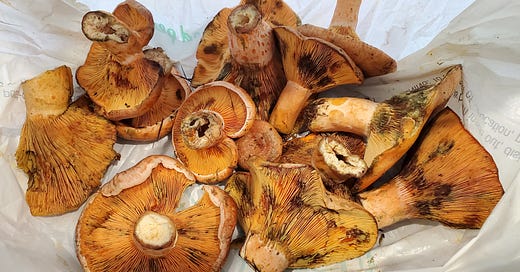



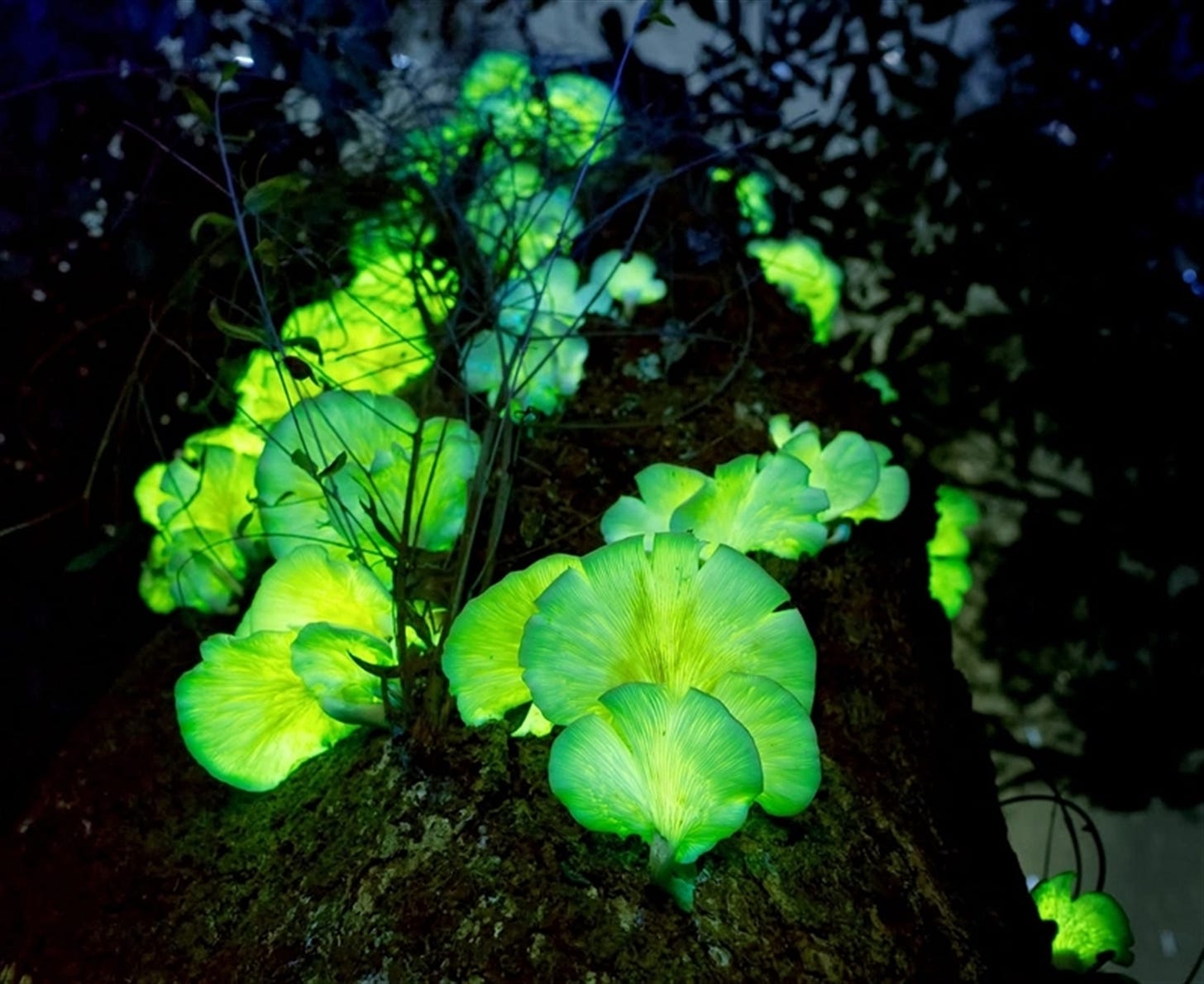
Very interesting. Thanks for this very informative article. I think what are called saffron milk caps are what I've known as simply pine mushrooms which they sometimes sell in grocers.
Could the mushroom you weren't familiar with be Hypholoma fasciculare, commonly known as the sulphur tuft, sulfur tuft or clustered woodlover.
https://www.rawpixel.com/image/4022210/photo-image-plant-mushroom
Did we already have an exchange around this subject? I see that the Sydney Fungal Studies Group has walks in areas around and not too far from Sydney that might be of interest. I see there was one in Earlwood close to where I live that I just missed on Saturday which I probably would have gone to if I'd known.
https://www.sydneyfungalstudies.org.au/activities-and-events.php
TDS: too damned scared